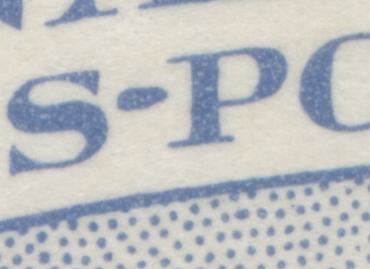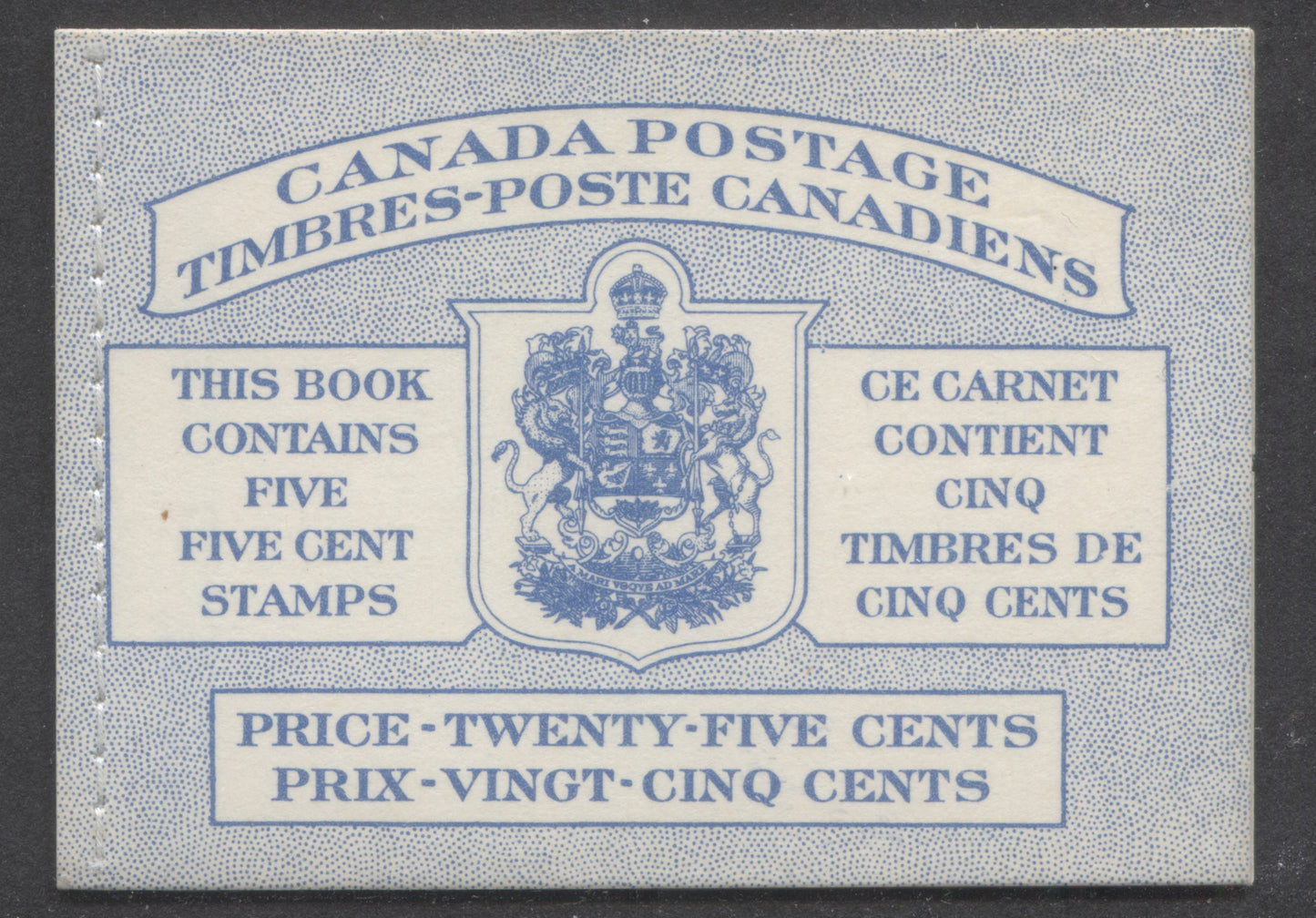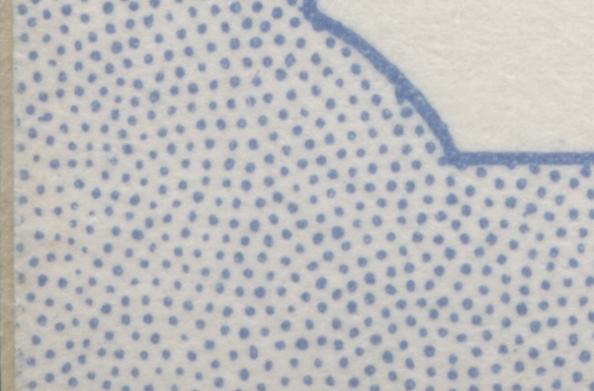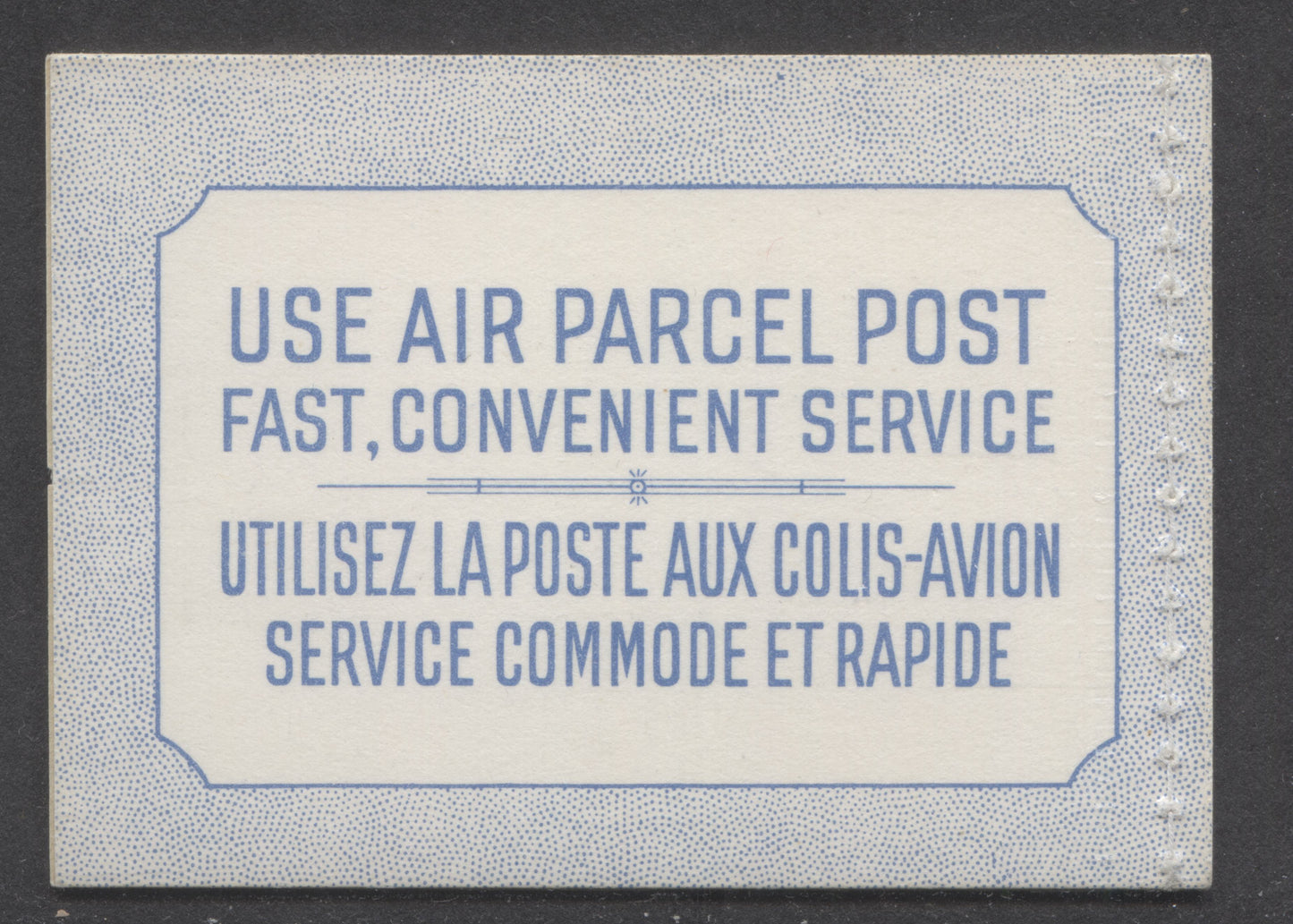Brixton Chrome
Canada #BK49B 1954 Wilding Issue, A Complete 25c Bilingual Booklet Made Up Of 5c Blue, One Pane Of 5+Label, Front Cover IIIg, Back Cover Mi, Type I Cover, Horizontal Ribbed Paper, Stitched Cover
Canada #BK49B 1954 Wilding Issue, A Complete 25c Bilingual Booklet Made Up Of 5c Blue, One Pane Of 5+Label, Front Cover IIIg, Back Cover Mi, Type I Cover, Horizontal Ribbed Paper, Stitched Cover
Couldn't load pickup availability
A complete 25c bilingual booklet from the 1954 Wilding Issue, with 5c blue, one pane of 5+label, front cover IIIg, back cover Mi, type I cover. Horizontal ribbed paper and stitched cover. Unitrade values this booklet at $7.
The booklet offered here grades 80 as follows:
Centering/Margins: 50/70
Cover Freshness: 10/10
Condition of Cover Edges: 5/5
Freshness of the Panes: 5/5
Absence of Visible Cover Flaws or Stains: 5/5
Condition of Interleaving and Contents: 5/5
BK49 was issued at the same time as BK48, and consequently most of the plate flaws found and corrected on BK48 also exist on BK 49, though I have not yet found examples of the frame breaks in the upper inscription panel that we saw on BK48, where there was a break under Canada and above the V of Five. There were two basic cover designs used for this booklet, the first being the dotted cover type that had been in use since 1935 and the second an inverted trapezoid on a lined background, with the inscriptions "Canada Postes Postage" inscribed across. The dotted cover types came with stitched covers and stapled covers, with staple sized that ranged from 12 mm to 16 mm, with 16 mm being the most common. The dotted cover types generally exist with both ribbed and smooth papers, while the later designs are with smooth paper only. 77,298,000 of the stapled booklets were issued and 4,500,000 stitched booklets were issued. Again, when looking at these quantities one must bear in mind that this was for the issue as a whole, and covers all cover types, staple sizes and paper types, so that the number produced for many of the varieties is still scarce, plus this was the most commonly used stamp at the time, so most of the booklets would have been used up.
Share










